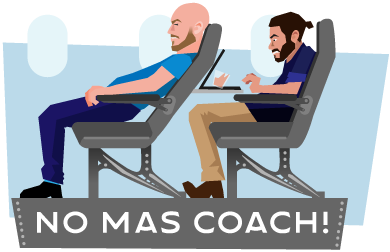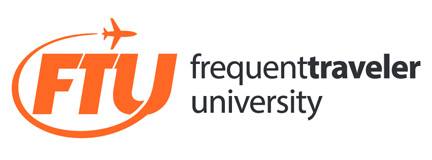Post 2 – Understanding how your Program works
Hopefully after reading the first post, you’ve made the choice of your main program based on the criteria suggested. Now that you’ve decided on an airline, it’s important to know the guts of the program, how it works for you, and more importantly, how you accumulate those precious miles. And yes, when I say that, I’m rubbing my hands together like Gollum from Lord of the Rings.
1. How to choose your best program.
2. Understanding the ins and outs of your program.
3. Earning with program partners and redemption.
4. How to earn apart from flying on planes.
5. The hidden DNA of credit cards.
6. Not all points and miles are the same.
7. Aspirational rewards and good mileage values.
8. Importance of status and elite benefits.
9. Manufactured spend basics
10. Searching for deals. Mistake fares. Mileage runs.
11. HUCA
This post will deal specifically with earning miles and accumulating through flying on planes. Subsequent posts will delve more into the other ways to earn miles, including partner programs, credit cards, dining programs, hair transplant consultations, laser eye surgery, car test drives, online surveys, bank offers, etc. Just because they’re called Frequent Flier miles, doesn’t mean you have to fly to earn them!
We’re going to look at two programs that base their mileage earning in different ways, Alaska Airlines and Delta Airlines. Of course, if you’ve decided to go with Southwest (why!!!), American, United (masochist…), etc, and you have questions about how those are accumulated, please don’t hesitate to shoot us an email and we can help you out with the basics.
Alaska Airlines, “We’ll be your friend!”
When I moved to Seattle with Ben back in 2014, I decided to switch my loyalty over from Delta to Alaska Airlines. It made sense for us, since most of the routes that we would be flying would be served by Alaska, and we could enjoy the upgrades to first class, better service, and good mileage redemption opportunities. Alaska has a distance-based mileage accrual system, meaning 1 mile flown is 1 mile earned. For example, the distance between Seattle and Raleigh-Durham is 2300 miles, so you will earn 2300 miles towards your program. Therefore, a round trip ticket between Seattle and Raleigh would net you 4600 miles. Pretty simple, right?
If you’re flying in a premium cabin such as first class, you would earn a bonus on top of your miles flown, typically between 25-50%. So, those 2300 miles you fly from Seattle-Raleigh would instead earn you 3600 miles. Consider it an added bonus for paying and flying in a premium cabin. Not to mention the off brand sparkling wine!
If a flight is under 500 miles, you would be credited with a minimum of 500 miles. For example, if the distance between Seattle and Yakima is only 200 miles (not sure why you would proactively choose to fly there however), then instead of giving you 200 miles they would credit you with a minimum of 500 miles for your frequent flier program. It’s the least they could for taking you to Yakima! The bonus for the premium cabin is also added on to this 500 minimum qualifier. With these calculations, it becomes fairly simple to figure out how many miles you are going to earn for any given flight.
Alaska also has a wide array of partner airlines that allow you to fly on their planes and credit to Alaska Airlines. For example, I’m currently flying on an American Airlines flight from Seattle to Chicago, but I’m crediting this flight to my Alaska frequent flier account and earning miles on Alaska instead of on American. Confused? Let me simplify a bit.
Airlines often belong to a group of other airlines called an alliance, and you can usually fly on one of those airlines and credit your flight to any frequent flier program they partner with. Since Alaska doesn’t belong to a specific alliance, they have certain partners such as American, Delta, British, KLM, Air France, Emirates, etc, that span multiple alliances. You can purchase a ticket and fly on these partner airlines and put your Alaska frequent flier number down for accumulation. For this reason Alaska is referred to as the “slut of the skies” in many frequent flier circles, but I see them as an opportunist, making friends everywhere they go. In the end for the consumer it’s a win, since more options are always better!
Depending on the partner, you might earn a 1:1 ratio or a percentage of the miles flown, based on your ticket price. For example, on a recent British Airways flight to London, we placed our Alaska numbers on the reservation, and since it was a discounted fare, instead of earning the 6000 miles for the flight we only earned about 3000. On the return we were flying in the premium economy cabin, and so we earned the 6000 miles plus a 10% bonus for the premium cabin. It can become a bit of a mathematics game with calculators sometime, so if you have a question about how many miles you’re going to earn for a specific flight, you can call your airline’s customer service and they will run the numbers for you.
Up until about a year ago, this is how the vast majority of frequent flier programs operated. The longer flights would earn you more miles, and the shorter flights would earn you less miles. Things changed when Delta airlines launched their revenue based program, which is based on ticket cost not miles flown.
Delta Airlines – It’s all about the money!
Delta was my go to program for over a decade. Lots of people ridiculed them for having a great airline but a horrible mileage program, but for me, I always found that when I wanted to redeem flights there were good options for me. Delta has a wide range of partners to redeem flights, and there was always a flight when I wanted them. At one point in my account I had over 750,000 miles and Ben and I were redeeming them for flights to Australia, Europe, etc. Ahhhh – the good ol’ days. This is the point where I became torn…
Then back in 2014 they announced they were dropping the 1:1 earning ratio and going for a revenue based program. There was going to be a very complicated mix of MQD (Medallion Qualifying Dollars) and MQM (Medallion Qualifying Miles) and the cost of the ticket (without airport taxes) would accumulate your miles at either 5x, 7x, 8x, 9x, or 11x depending on your elite status. Confused yet? I’ve been doing this for a decade and I’m still confused.
Here’s the best example that I can muster. Let’s go back and use that Seattle/Raleigh example from before. In the previous example, a round trip ticket would earn you 9416 miles. With Delta, it’s all about the money. Lets say that the ticket was purchased on a discount for $299 round trip. Chances are the eligible dollars are going to be around $240 (because of all the taxes and fees) so here’s the breakdown:
So you can see that even as an elite member I was earning almost a fifth of the miles than flying and crediting with Alaska Airlines. As a base member, you would have to fly almost 10 times as much to get a free flight. Since those round trip domestic flights are 25,000 miles each, you would have to fly over 20 times to get one free. That’s the worst loyalty punchcard ever. Buy 24 and your 25th is free! And if you want to hold on to your miles for one of those coveted round trip Europe first class ticket? It turns into buy 105 round trips to Raleigh from Seattle and your next flight to Europe is free** (assuming you can find space on a Delta partner or Delta airline with availability in the off season between cities that Delta allows you to redeem with). Also known as, via the Huffington Post… when Hell Freezes Over…
So, is there a time when flying on Delta makes sense? Sure! Does someone else pay for your tickets and usually put you in expensive last minute tickets or fly you in paid business class? Then you’ll come out a winner. Because Delta makes no bones about it – they only want you if you can spend the big bucks.
So what if you did choose Delta as your program of choice? Don’t fret. There are other ways to earn miles with Delta, and you’ll find out in subsequent posts.
Summary
No matter if you chose a program that rewards you on miles and distance flown (American/Alaska) or an airline that rewards you on amount of money spend (Delta/United/Southwest/JetBlue), hopefully you’ll have a general idea of how it is that you earn miles. Remember, that on some airlines your airline miles will expire if you don’t have any activity in a certain time span. Delta’s miles don’t expire (thank God since you’ll need a long time to build up an account balance), and it’s really easy to earn miles (as you’ll see soon enough), so hopefully even if you fly very infrequently, over time you’ll be able to earn miles on your flights.
Happy flying!












Trackbacks/Pingbacks